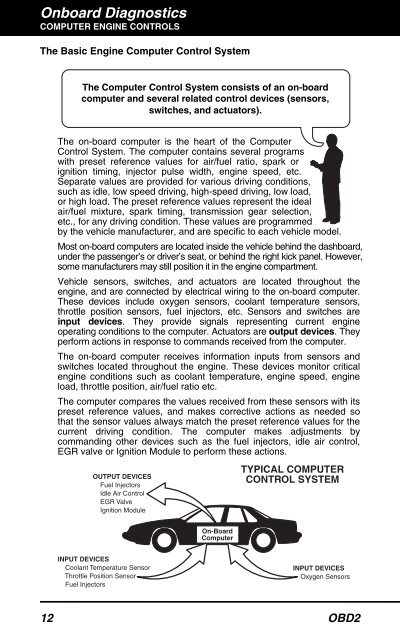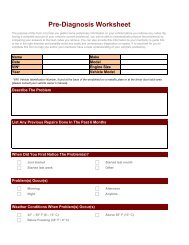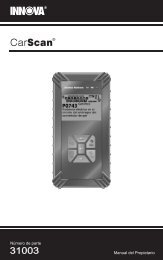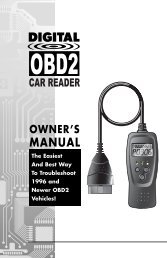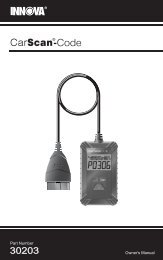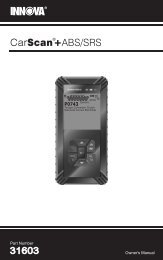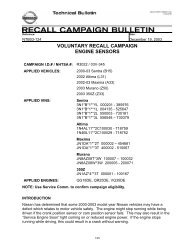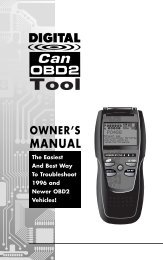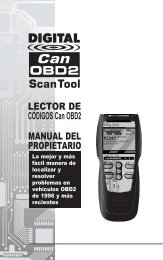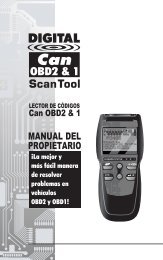Untitled - Innova
Untitled - Innova
Untitled - Innova
Create successful ePaper yourself
Turn your PDF publications into a flip-book with our unique Google optimized e-Paper software.
Onboard Diagnostics<br />
COMPUTER ENGINE CONTROLS<br />
The Basic Engine Computer Control System<br />
The Computer Control System consists of an on-board<br />
computer and several related control devices (sensors,<br />
switches, and actuators).<br />
The on-board computer is the heart of the Computer<br />
Control System. The computer contains several programs<br />
with preset reference values for air/fuel ratio, spark or<br />
ignition timing, injector pulse width, engine speed, etc.<br />
Separate values are provided for various driving conditions,<br />
such as idle, low speed driving, high-speed driving, low load,<br />
or high load. The preset reference values represent the ideal<br />
air/fuel mixture, spark timing, transmission gear selection,<br />
etc., for any driving condition. These values are programmed<br />
by the vehicle manufacturer, and are specific to each vehicle model.<br />
Most on-board computers are located inside the vehicle behind the dashboard,<br />
under the passenger’s or driver’s seat, or behind the right kick panel. However,<br />
some manufacturers may still position it in the engine compartment.<br />
Vehicle sensors, switches, and actuators are located throughout the<br />
engine, and are connected by electrical wiring to the on-board computer.<br />
These devices include oxygen sensors, coolant temperature sensors,<br />
throttle position sensors, fuel injectors, etc. Sensors and switches are<br />
input devices. They provide signals representing current engine<br />
operating conditions to the computer. Actuators are output devices. They<br />
perform actions in response to commands received from the computer.<br />
The on-board computer receives information inputs from sensors and<br />
switches located throughout the engine. These devices monitor critical<br />
engine conditions such as coolant temperature, engine speed, engine<br />
load, throttle position, air/fuel ratio etc.<br />
The computer compares the values received from these sensors with its<br />
preset reference values, and makes corrective actions as needed so<br />
that the sensor values always match the preset reference values for the<br />
current driving condition. The computer makes adjustments by<br />
commanding other devices such as the fuel injectors, idle air control,<br />
EGR valve or Ignition Module to perform these actions.<br />
OUTPUT DEVICES<br />
Fuel Injectors<br />
Idle Air Control<br />
EGR Valve<br />
Ignition Module<br />
TYPICAL COMPUTER<br />
CONTROL SYSTEM<br />
On-Board<br />
Computer<br />
INPUT DEVICES<br />
Coolant Temperature Sensor<br />
Throttle Position Sensor<br />
Fuel Injectors<br />
INPUT DEVICES<br />
Oxygen Sensors<br />
12 OBD2


